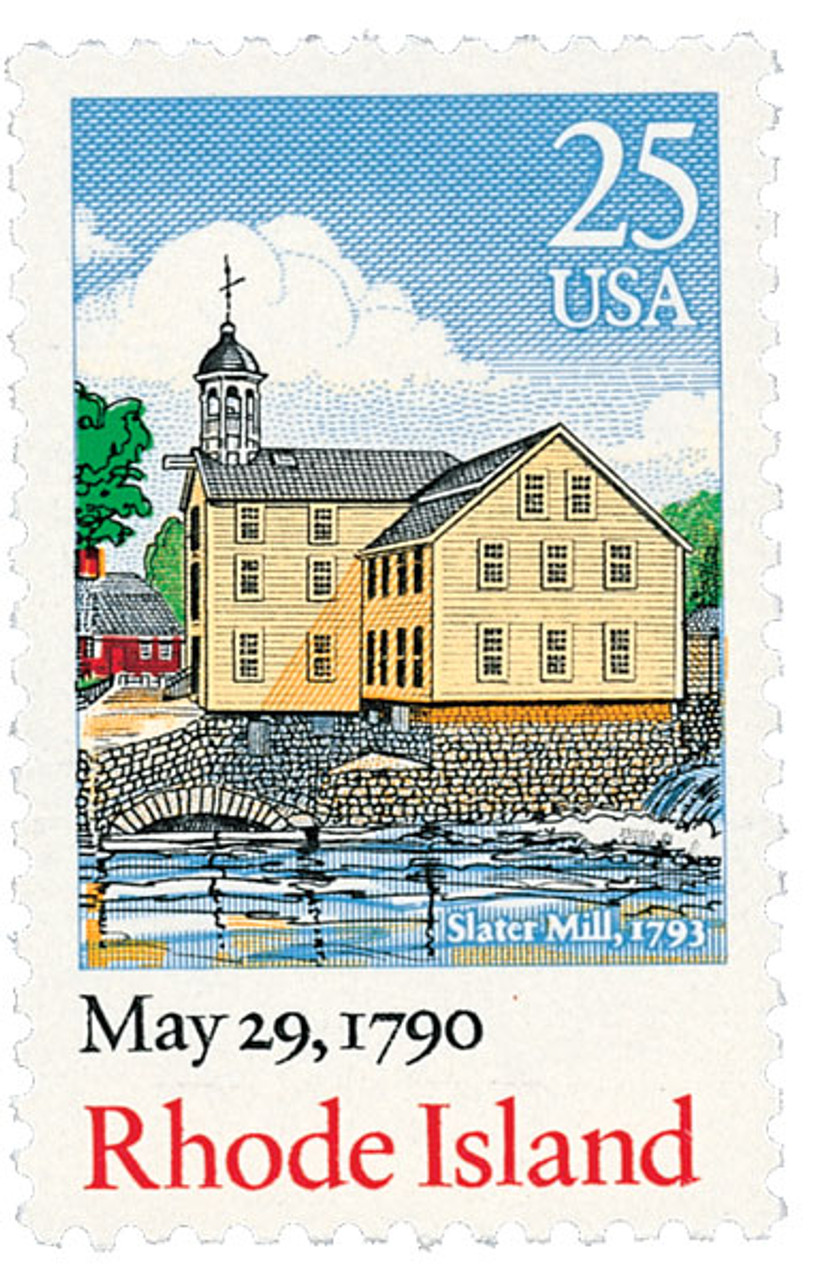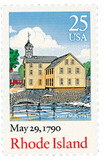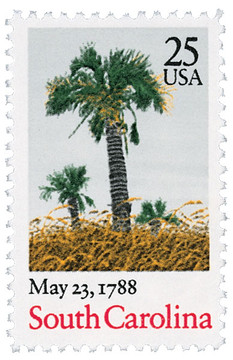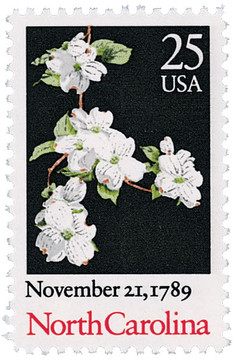
U.S. #2348
1990 25¢ Rhode Island
Bicentenary Statehood
- 13th and final stamp in Bicentenary Statehood Series
- Issued on 200th anniversary of statehood
- Issued at the Slater Mill, same place pictured on the stamp
Stamp Category: Commemorative
Series: Bicentenary Statehood
Value: 25¢, first-class rate
Fi... more
U.S. #2348
1990 25¢ Rhode Island
Bicentenary Statehood
- 13th and final stamp in Bicentenary Statehood Series
- Issued on 200th anniversary of statehood
- Issued at the Slater Mill, same place pictured on the stamp
Stamp Category: Commemorative
Series: Bicentenary Statehood
Value: 25¢, first-class rate
First Day of Issue: May 29, 1990
First Day City: Pawtucket, Rhode Island
Quantity Issued: 164,130,000
Printed by: Bureau of Engraving and Printing
Printing Method: Lithographed, engraved, & photogravure
Format: Panes of 50 in sheets of 200
Perforations: 11
Why the stamp was issued: As part of a series honoring the 200th statehood anniversaries of the first 13 US states.
About the stamp design: The USPS initially hired two artists to create concept sketches for the Rhode Island stamp. Among their designs were a map of Narragansett Bay, sea shells (representing the nickname “The Ocean State”), a 10-shilling note, and the George Washington, a ship built in Providence. One artist also mocked up several versions of an old-fashioned anchor in various positions and locations. This was a result of a specific request, because the state seal includes an anchor and the state has a long maritime history. While many liked the idea, the postmaster general turned it down, saying it wouldn’t carry enough meaning for the people of Rhode Island.
Robert Brangwynne was then asked to create a sketch of the Slater Mill, which still stands in Pawtucket. The USPS had received several requests for a stamp honoring the mill over the years, and decided that the Rhode Island statehood stamp could be the perfect place to answer those requests. The design was approved with few changes, but the words “Slater Mill, 1793” were added, making it the only stamp in the series with identifying information about the image included in the design.
First Day City: The First Day ceremony for this stamp was held at the Slater Mill Historic Site in Pawtucket. There had been significant back and forth over the date and location of the first day ceremony. Most of the stamps were issued in the state capitals. But as the Slater Mill was still standing, many believed it would make the perfect first day location for the stamp.
About the Bicentenary Statehood Series: The 1935 Michigan Centenary stamp is often considered America’s first statehood stamp. However, that stamp actually used the wrong date – Michigan ratified its constitution in 1837, but wasn’t granted statehood until 1837. The first correct statehood stamp marked the 100th anniversary of Arkansas in 1936. In the years since, many other statehood stamps were issued. However, among all these statehood stamps, 13 were missing – the first 13 states that formed our nation. With this series, the USPS planned to honor those state as they deserved.
From 1987-1990, the Bicentenary Statehood Series commemorated the signing of the Constitution by representatives of the first 13 Colonies. The stamps were issued in the 200th year after each state approved the Constitution. They were issued in the order each colony became a state, though not always on the exact date of ratification. Each stamp shows traditional symbols or scenes from the state.
History the stamp represents: On May 29, 1790, Rhode Island became the last of the original 13 colonies to ratify the U.S. Constitution, making it our 13th state.
When the first Europeans arrived, Algonquian Indians lived in the area that is now Rhode Island. A Portuguese navigator, Miguel de Cortereal, may have reached the Rhode Island coast as early as 1511. Giovanni da Verrazano, an Italian explorer working for France, reached Narragansett Bay in 1524. Verrazano may have given Rhode Island its name, after the Island of Rhodes in the Mediterranean Sea.
















